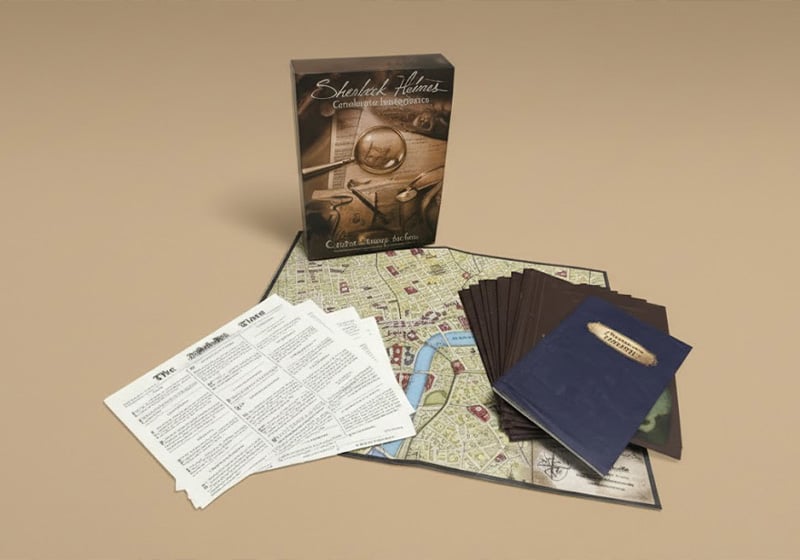Table of Contents
Sherlock Holmes: Consulting Detective is not your usual board game. It’s a detective experience in which players use neither dice nor figurines, but pound the foggy streets of Victorian London as they try to solve crimes that Sherlock Holmes is too busy to investigate himself.
Published on premium printed materials and presented in a sleek box, the game is a modern classic that’s now over 40 years old. Sherlock Holmes: Consulting Detective puts players in the shoes of the “Baker Street Irregulars”. Actual characters from Arthur Conan Doyle’s novels, this band of young waifs and strays are Holmes’s eyes and ears on the streets, where they “see and hear everything”.
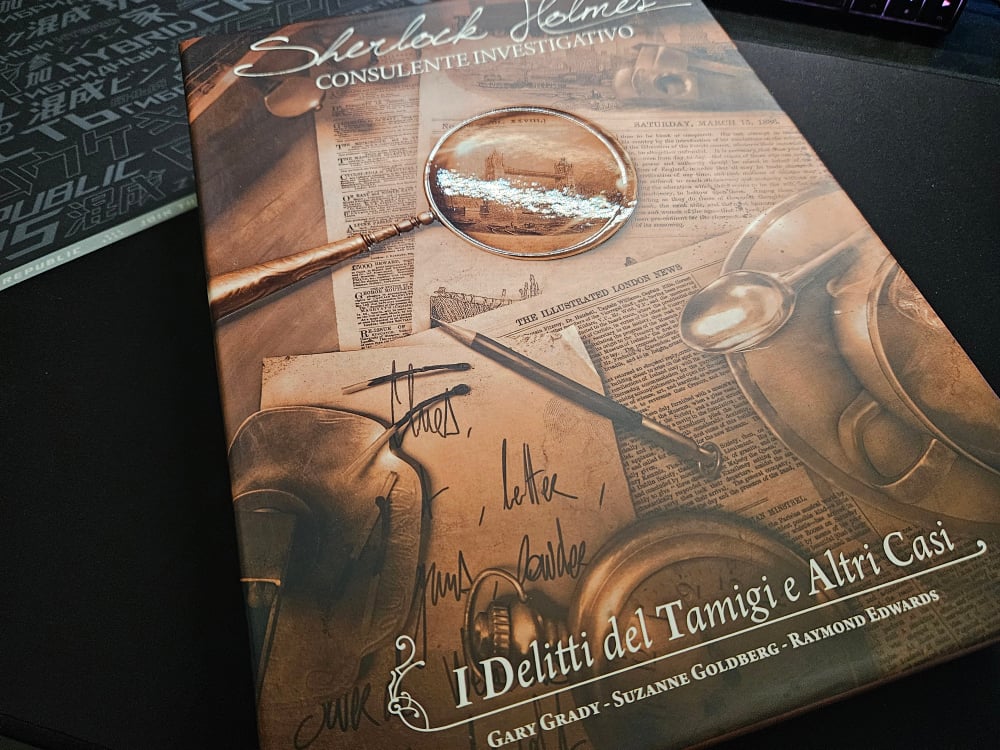
Led by Mr Wiggins, they must equal or better Holmes’s brilliant investigative logic to solve the most baffling of cases. The game mechanics are straightforward and based on a series of printed materials found in the box. From the map of London to the directory and newspapers, physical interaction with these materials is part and parcel of the investigation.
It’s not just a case of unmasking the culprit, but doing so as efficiently as possible – and beating Holmes to it. It’s an exercise in pure deduction that created a whole new genre of board game.
A classic is born
It’s the early eighties. Gamebooks and table-top role-playing games like Dungeons & Dragons and Call of Cthulhu are all the rage. But although they have some older fans, they’re played mostly by teens and pre-teens.

There isn’t yet a pure detective game. But this changes in 1981 with the release of Sherlock Holmes: Consulting Detective. Created by Gary Grady, Suzanne Goldberg and Raymond Edwards, it was originally published in the US by Sleuth Publications.
Unlike most other board games from that era, Sherlock Holmes: Consulting Detective is a more thoughtful and cerebral experience – and therein lies its appeal. After becoming a bestseller in the States, it was translated into multiple languages and released around the world.
The game was an instant hit with players and critics alike. It sold thousands of copies and won prestigious accolades, including a Charles S. Roberts Award in the US in 1982 and a Spiel des Jahres award in Germany in 1985.

Over the years, the game has spawned a series of sequels. It currently comprises the following volumes:
- Sherlock Holmes: Consulting Detective – The Thames Murders & Other Cases: the original game released in 1981. This is the version we’ll be looking at in this article.
- Sherlock Holmes: Consulting Detective – Carlton House & Queen’s Park: the second volume published, it introduces new cases but keeps the same game mechanics as the first volume.
- Sherlock Holmes: Consulting Detective – Jack the Ripper & West End Adventures: this edition contains a series of cases, four of which involve hunting Jack the Ripper.
- Sherlock Holmes: Consulting Detective – The Baker Street Irregulars: new storytelling and game mechanics are introduced in this edition, including a different way of tracking progress in the investigation. An entire story arc is dedicated to the Baker Street Irregulars.
Rules and game mechanics
Sherlock Holmes: Consulting Detective is a game for one to eight players. The goal is to solve a puzzling case by interviewing suspects, reading newspapers and roaming the streets of London in the hunt for clues. The game culminates with a meeting at 221/B Baker Street with the one and only Sherlock Holmes, who provides the real versions of events. A score is assigned to players based on their answers to a quiz about the case: they win the game if they score higher than Holmes, although just equalling his score is an achievement in its self.

As well as solitaire, there are two other gameplay modes:
- Cooperative: players cooperate and decide together on where to hunt for clues to solve the mystery. They discuss the case aloud, which generally leads to a better understanding of the story and more relaxed gameplay.
- Competitive: while following the same leads, players don’t discuss them aloud. Rather, each player puts the pieces of the puzzle together in their head. When a player thinks they’ve cracked it the case, they can take the final quiz. The winner is the player with the highest score in the quiz.
The game: how an investigation unfolds
The game is played using the reams of printed materials provided, which makes it one of the most hands-on games on the market. Here’s what you’ll find in the box:
- Rulebook: this short booklet explains the rules and the setting. It also contains a list of informants, which is key for gameplay.
- Map of London: this shows the city as it was in the Victorian era. Divided into five areas, it’s used by players to navigate from the scene of the crime to places of interest for the investigation.
- The London Directory: this lists all the characters it’s possible to meet and where to find them. It ties together the map and the casebook.
- 10 casebooks: these are the game’s narrative engine. Each book presents a case, where to find the characters and the all-important final letter in which Holmes explains the solution to the case.
- 10 newspapers: these are fictitious copies The Times. Players must scour their articles for clues about the case.
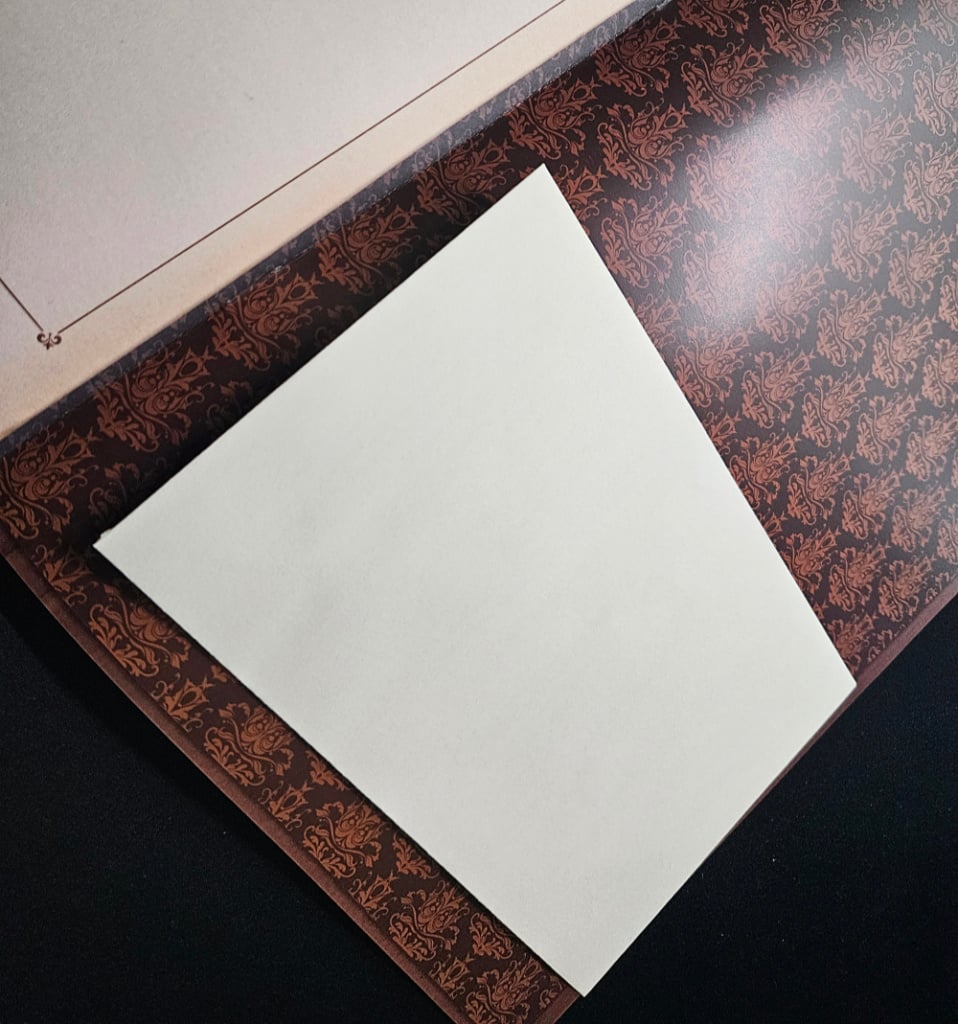
The game typically unfolds as follows:
- The case is read: a player reads aloud an introduction of the case, which outlines the crime, the victim and the initial leads.
- A lead is chosen: one at a time, each player must choose a lead to follow up: it could be a person, business or place mentioned in the introduction. If playing cooperatively, players discuss between themselves which leads to investigate.
- The printed materials are consulted: players use the Directory to look up addresses of people or businesses, or search for a place on the map of London. They can also choose to read the newspaper for clues about the case.
- The lead is followed up: once they have found an address, players read the corresponding paragraph in the casebook. This paragraph reveals what they find in that place: an eyewitness account, a piece of evidence or a dead end. Generally speaking, the fewer leads followed up, the higher the chances of outsmarting Sherlock Holmes.
- The game continues: once new information had been obtained, the cycle is repeated. Players discuss the next lead to investigate. When they think they’ve cracked the case, they visit Sherlock Holmes to hear what actually happened and get a final score.
Printed materials in Sherlock Holmes: Consulting Detective – what are they like?
The latest editions from Asmodee are beautifully done. Let’s have a closer look at their release for the first game in the series, Sherlock Holmes: Consulting Detective – The Thames Murders & Other Cases:
- The box is made from stiff card with raised elements. And this promotional box is packed with premium printed materials.

- All the literature, apart from the newspapers, is presented as staple-bound booklets.
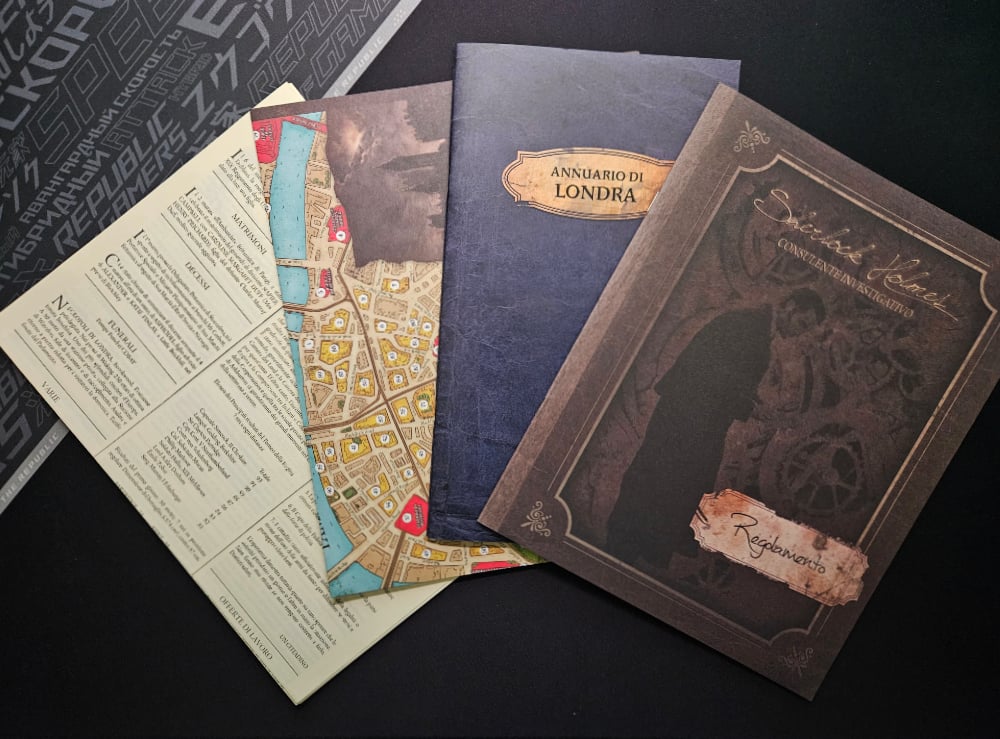
- The rulebook is a short booklet printed in colour. It has a matte finish and an amberish colour (like the rest of the material) to give it a vintage feel. Inside, there are both decorative and explanatory illustrations. The text is laid out in two or three columns, as well as in explanation boxes.
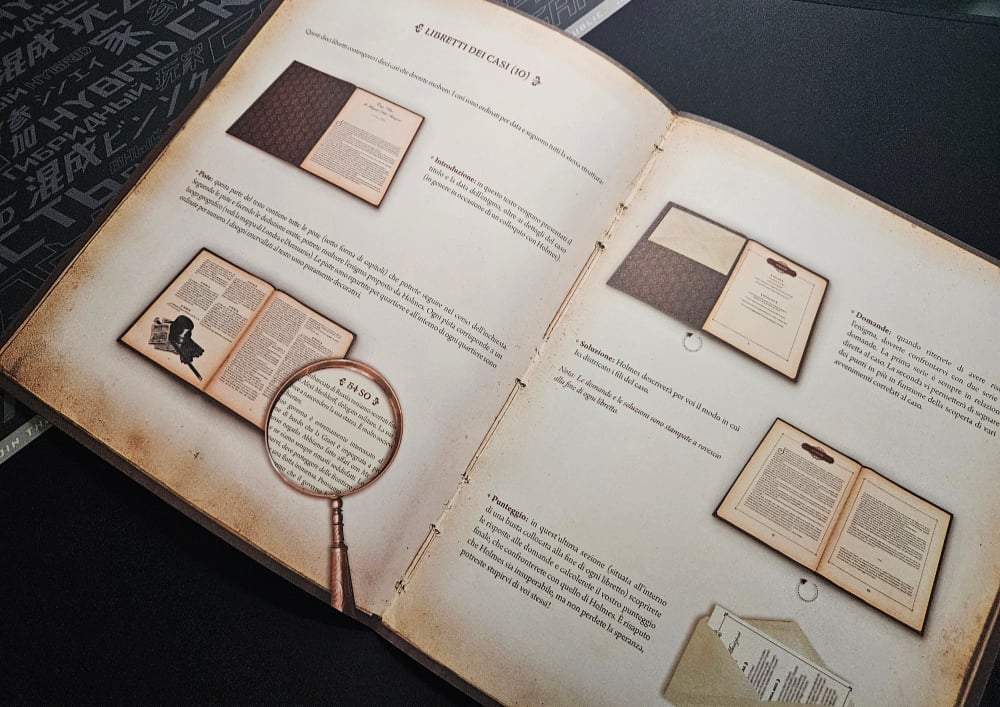
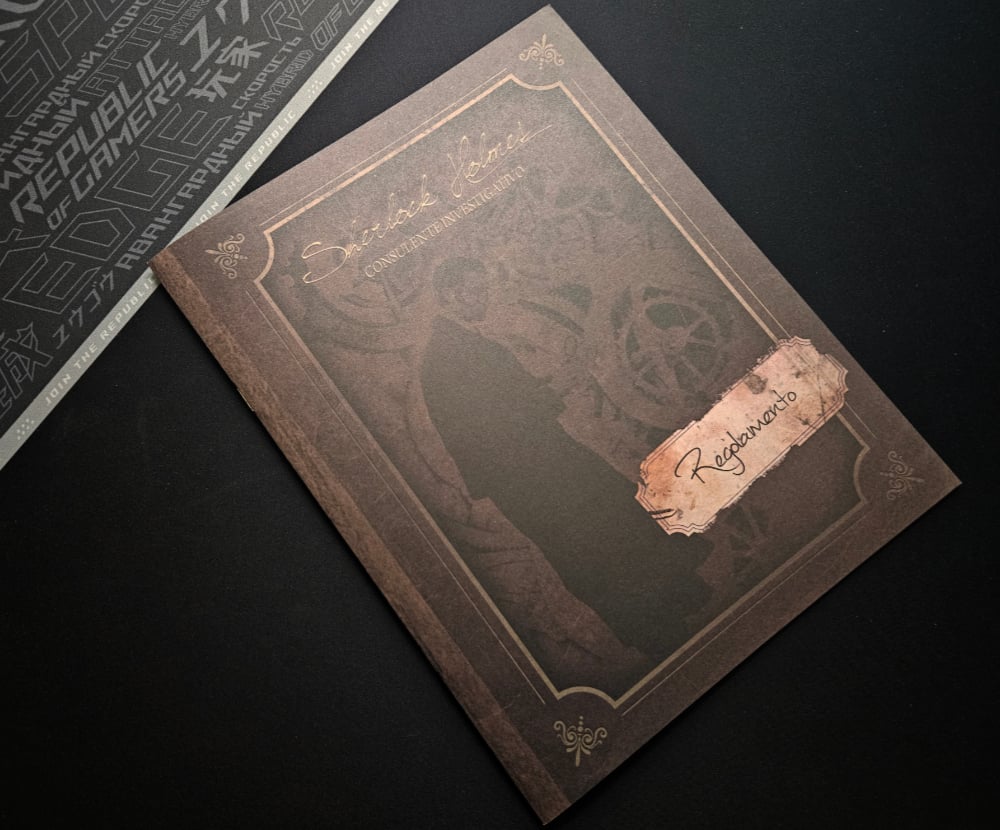

- The map is basically a sturdier version of a folded flyer. It features compass points to help you as you criss-cross the streets of London looking for clues.
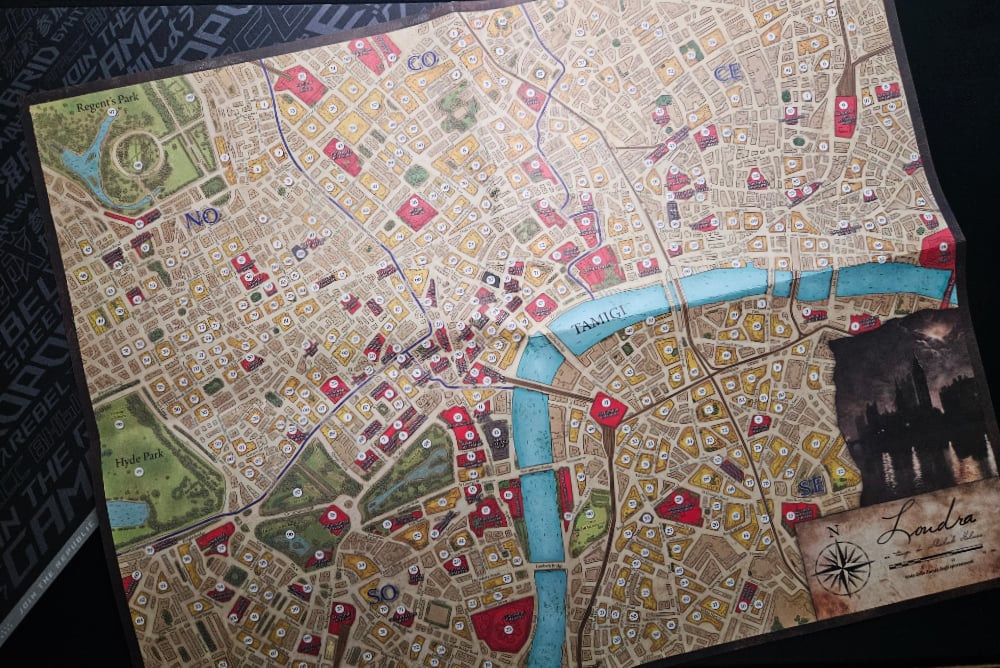
- The London Directory is a little staple-bound book that simply lists a series of names and coordinates, with information arranged in two columns.
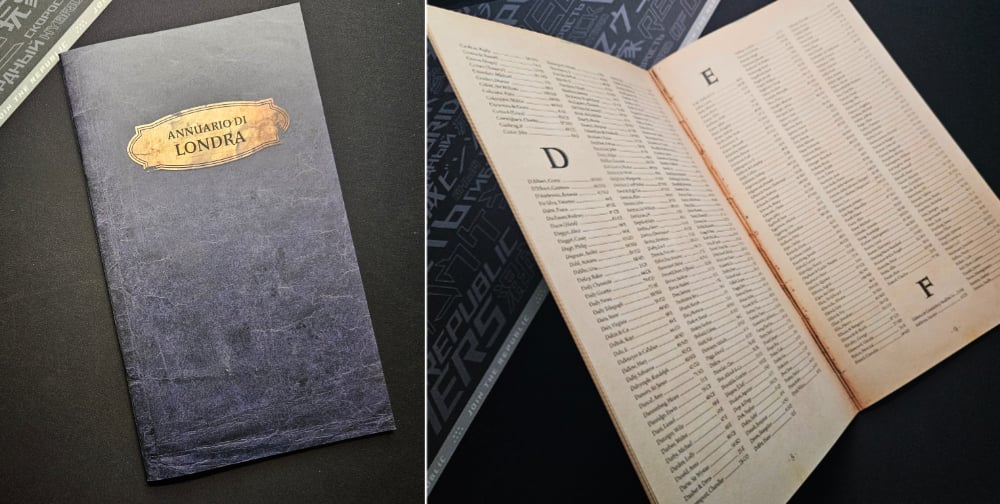
- The casebooks, 10 in all, have the same format and layout as the rulebook: the text is arranged in two columns and information boxes, as well as letters and eyewitness accounts.
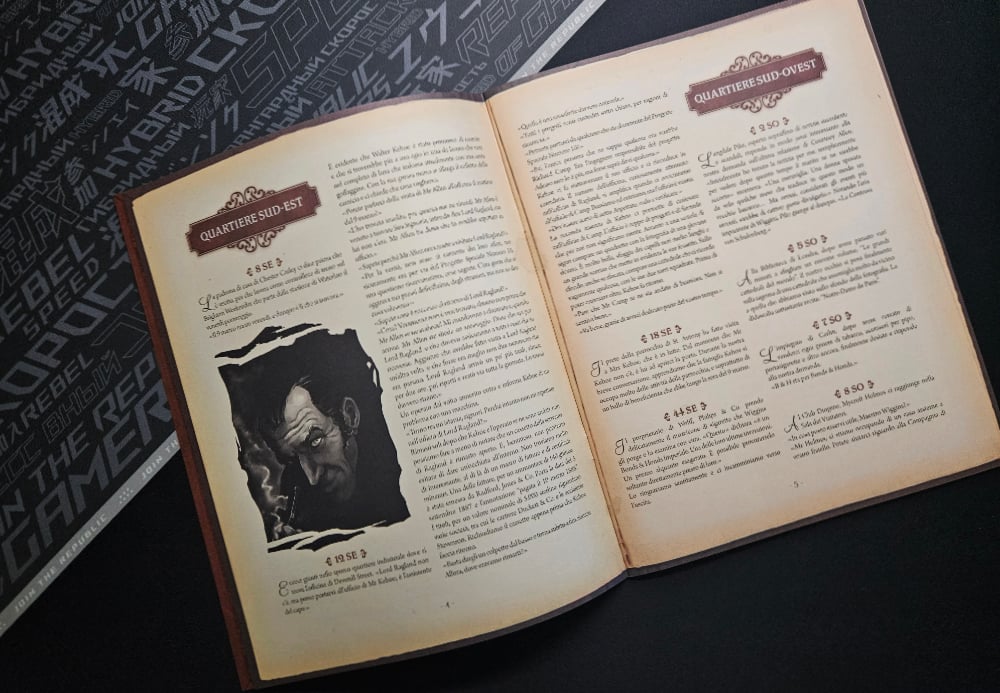
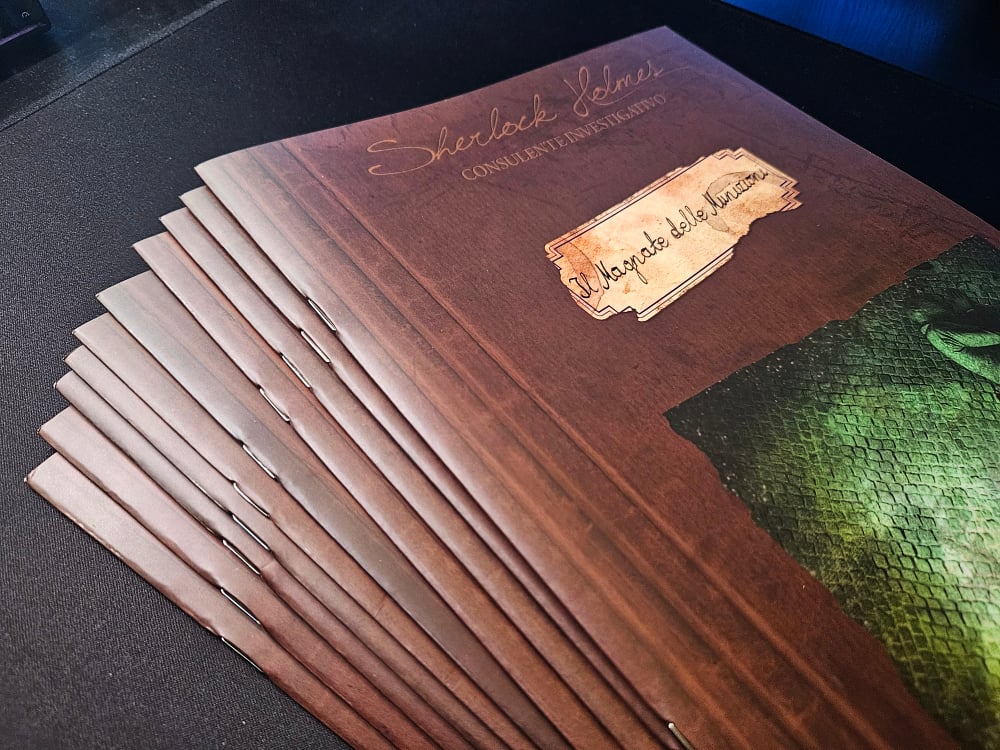
- The newspapers: these are simple folded sheets, printed retro verso. They’re packed with clues for players to find.
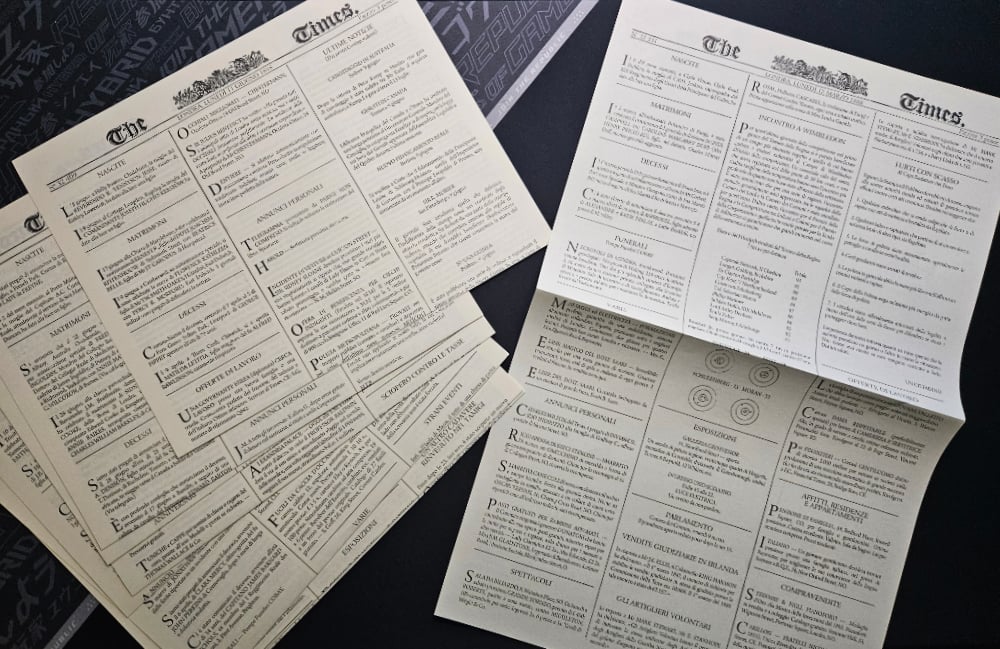
So there we have Sherlock Holmes: Consulting Detective, a board game that prizes intellect, deduction and pure reasoning as it turns players into sleuths.
We hope this article inspires you to try the game, and, who knows, maybe even create your own printed board game…

